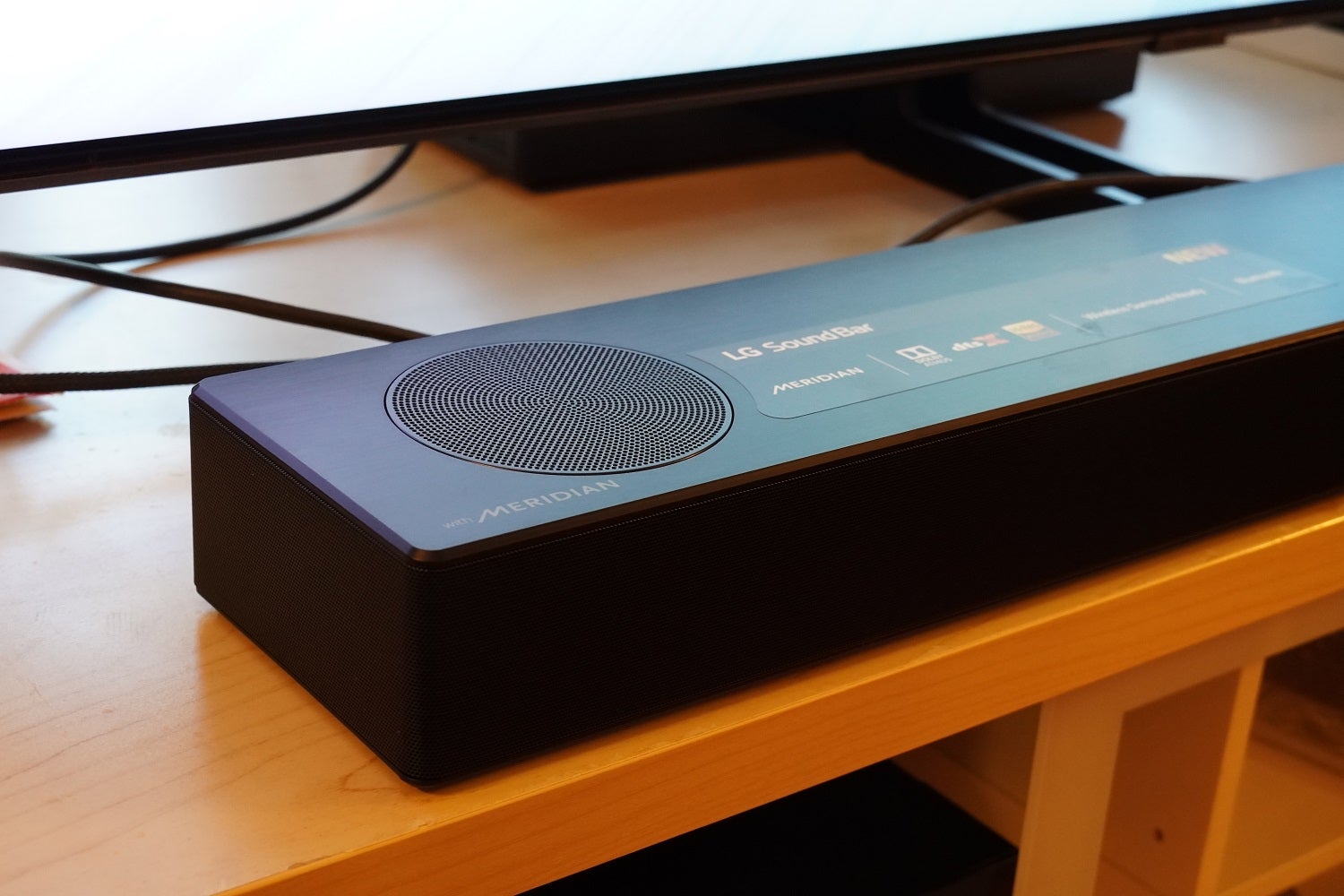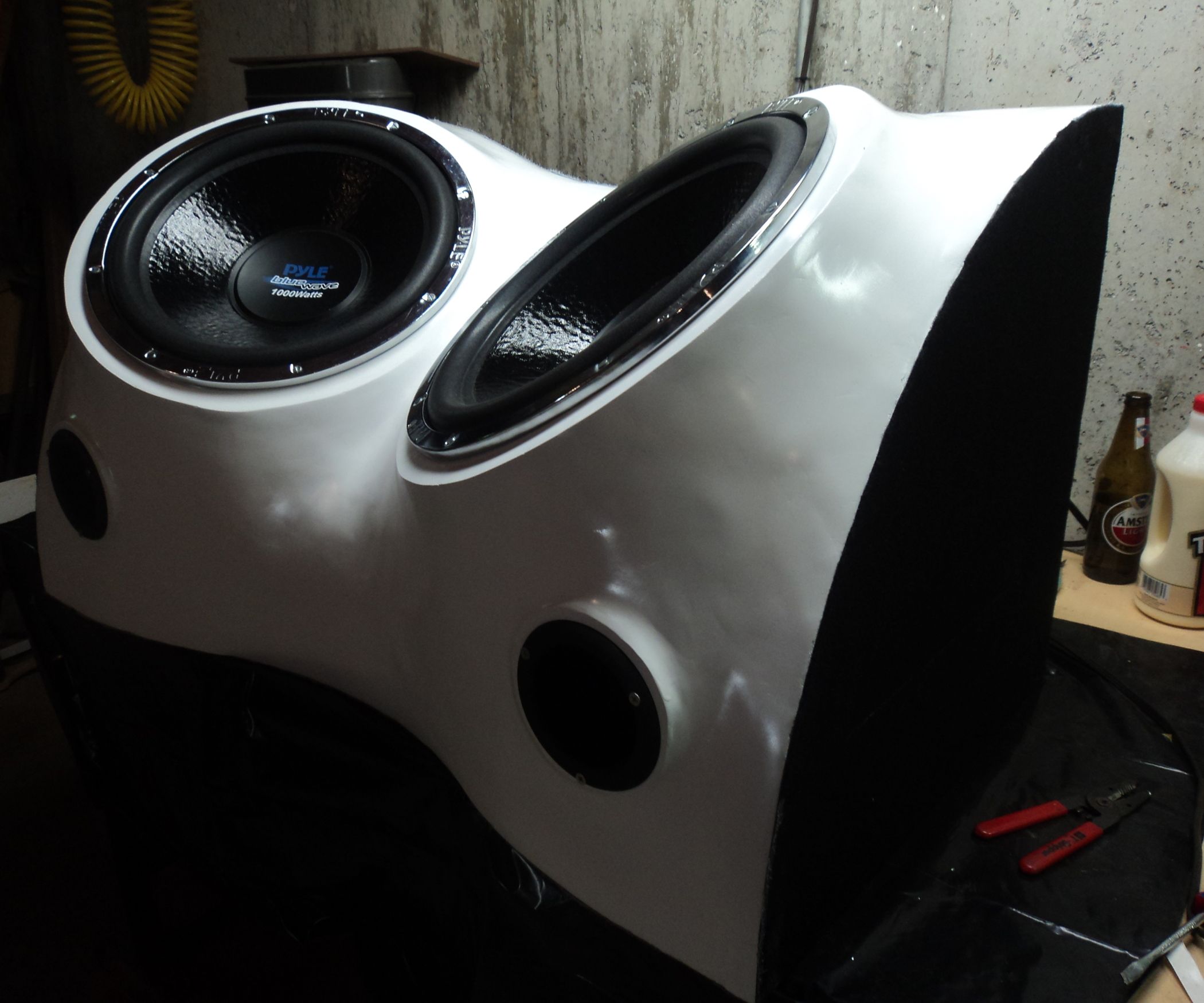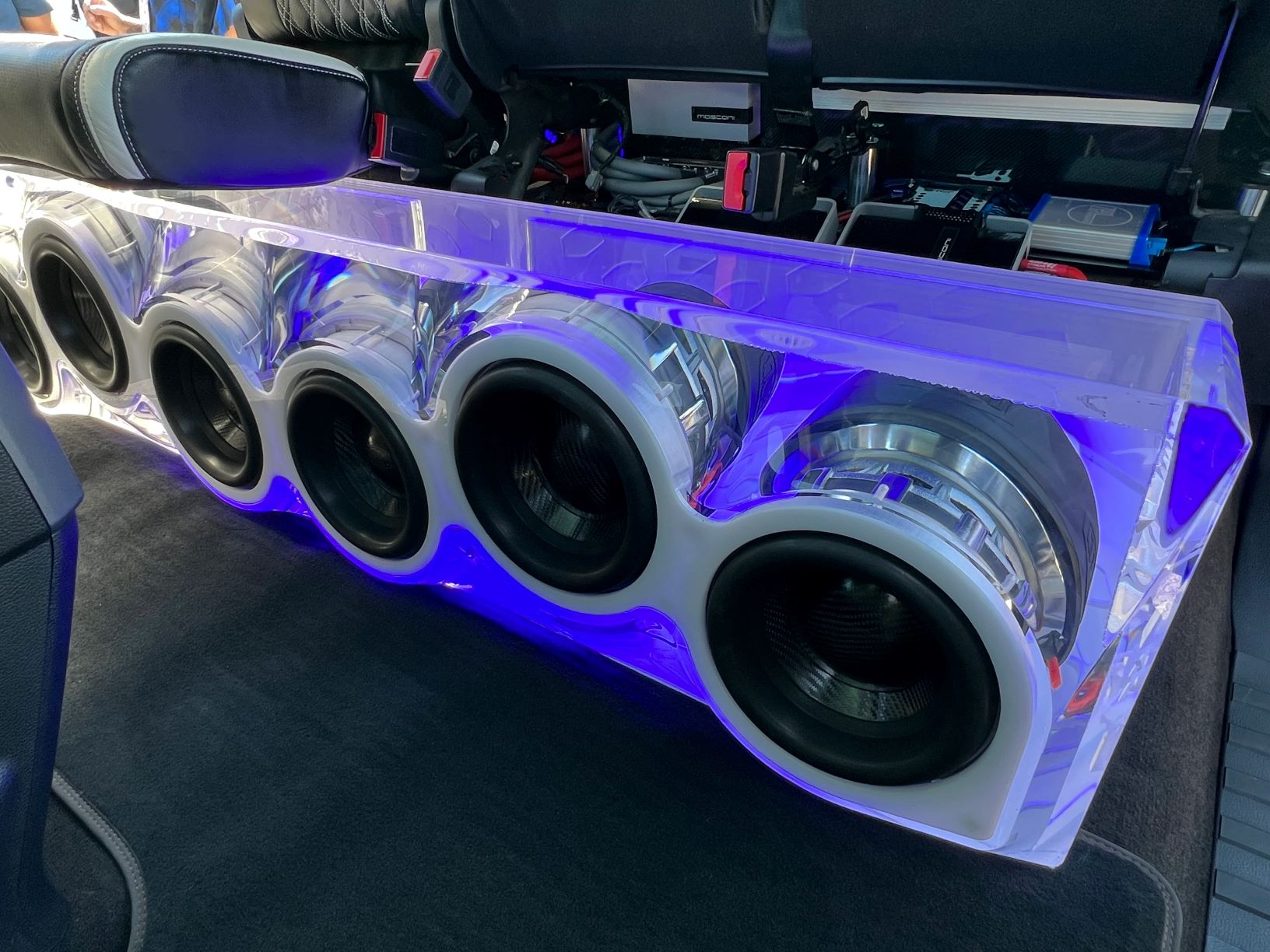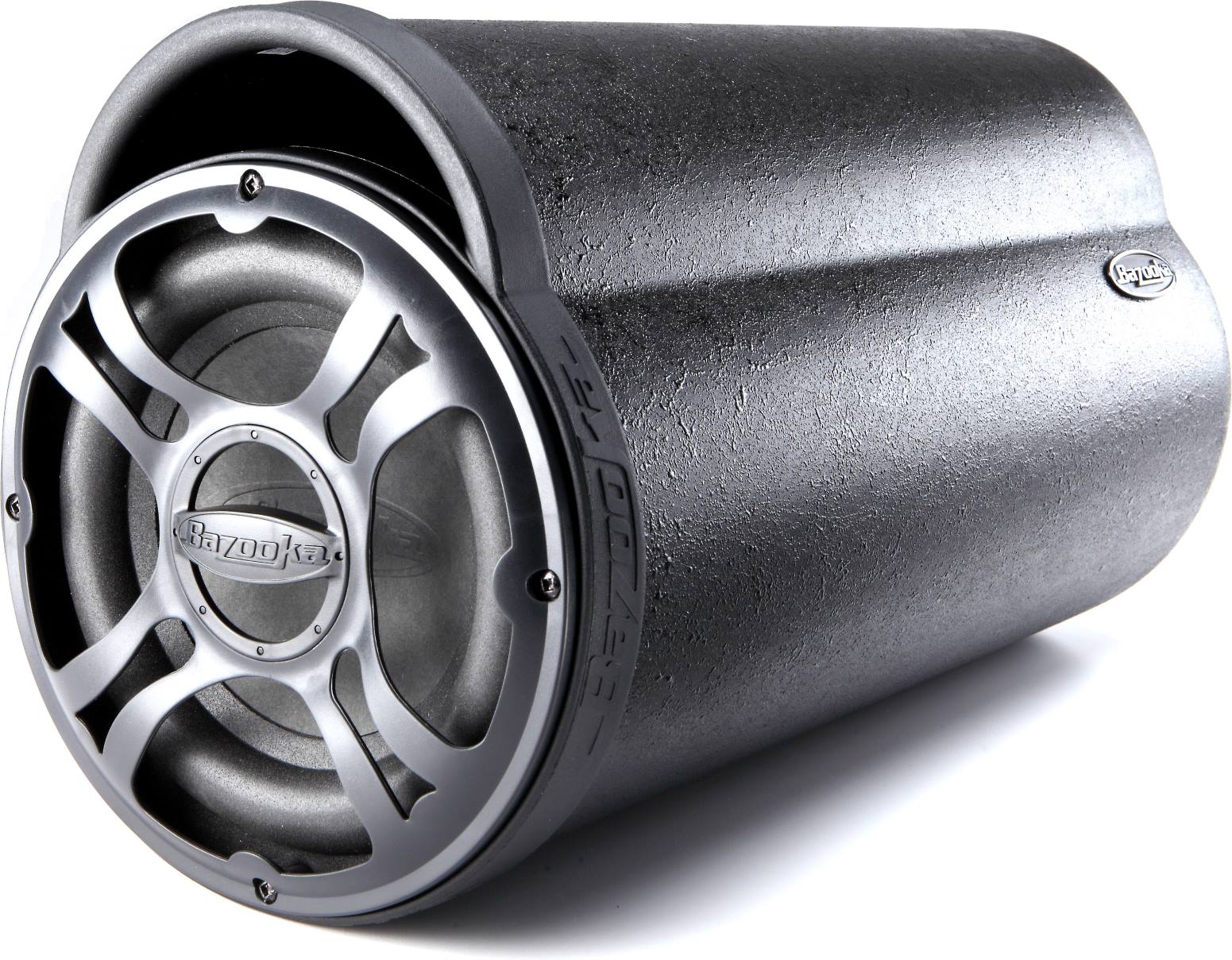Home>Devices & Equipment>Subwoofer>How To Make Subwoofer Louder


Subwoofer
How To Make Subwoofer Louder
Published: January 20, 2024
Increase the volume of your subwoofer with these easy tips and tricks. Make your music and movies come alive with a louder and more immersive bass experience.
(Many of the links in this article redirect to a specific reviewed product. Your purchase of these products through affiliate links helps to generate commission for AudioLover.com, at no extra cost. Learn more)
Table of Contents
Introduction
Welcome to the world of subwoofers! If you’re a music enthusiast or a home theater lover, you probably already know the importance of a good subwoofer in enhancing the audio experience. A subwoofer is a specialized speaker designed to reproduce low-frequency sounds, commonly referred to as bass. It adds depth and impact to the audio, giving you a more immersive and exhilarating listening experience.
However, if you feel that your subwoofer isn’t delivering the desired level of bass or if you’re looking to make it even louder and more powerful, you’ve come to the right place. In this article, we’ll delve into the world of subwoofers and explore various tips and techniques to make your subwoofer louder.
Before we dive into the details, it’s important to understand that making a subwoofer louder requires careful consideration of several factors, including the quality of your subwoofer, its placement in the room, and the adjustment of audio settings. By optimizing these elements, you can significantly improve the bass response and overall performance of your subwoofer.
So, whether you’re a music lover hoping to feel the low-end frequencies in your favorite songs or a movie enthusiast seeking that rumbling cinematic experience at home, join us on this journey as we reveal the secrets to making your subwoofer louder and maximizing your audio enjoyment.
Understanding Subwoofers
Before we start boosting the performance of your subwoofer, it’s essential to understand how it works and its role in the audio system.
A subwoofer is a specialized speaker designed to reproduce low-frequency sounds, typically ranging from 20Hz to 200Hz or lower, which is below the range of most other speakers. It adds depth, impact, and richness to the audio by handling the low-end frequencies that regular speakers can’t reproduce effectively.
Subwoofers come in various sizes and designs, including sealed enclosures, ported enclosures, and bandpass enclosures. Each design has its own characteristics, with sealed enclosures typically offering tighter, more controlled bass, and ported enclosures providing more output and lower frequency extension. The choice of subwoofer design depends on your personal preferences and the specific requirements of your audio setup.
When selecting a subwoofer, it’s important to consider its power handling capabilities, sensitivity, and frequency response. Power handling refers to the amount of power a subwoofer can handle without distortion, while sensitivity measures how efficiently the subwoofer converts power into sound. The frequency response indicates the range of frequencies the subwoofer can reproduce and how well it performs within that range.
In addition to their technical specifications, subwoofers can have different driver configurations, such as single driver (most common), dual driver, or even multiple drivers arranged in an array. These configurations affect the overall performance and output of the subwoofer.
Understanding the basic components and characteristics of subwoofers allows you to make informed decisions when choosing the right subwoofer for your needs and ensures that you get the best possible performance from your audio system.
Choosing the Right Subwoofer
When it comes to choosing the right subwoofer, there are a few key factors to consider. These factors will help ensure that you select a subwoofer that suits your needs and provides the desired level of performance.
1. Size and Type:
Subwoofers come in various sizes, typically ranging from 8 to 15 inches. The size you choose depends on the size of your room and your personal preferences. Generally, larger subwoofers can produce deeper and more powerful bass, but they may not be suitable for smaller rooms. Additionally, you’ll need to decide between a powered subwoofer, which has its own built-in amplifier, and a passive subwoofer, which requires an external amplifier.
2. Power and Sensitivity:
The power rating of a subwoofer indicates its maximum power handling capacity. Ensure that the subwoofer’s power rating matches your audio system’s amplifier output to avoid underpowering or overpowering the subwoofer. The sensitivity rating measures how efficiently the subwoofer converts power into sound. Higher sensitivity ratings will allow the subwoofer to produce more sound with less power. Consider these factors to ensure optimal performance and prevent distortion.
3. Frequency Response:
The frequency response of a subwoofer indicates the range of frequencies it can reproduce. Look for a subwoofer with a lower frequency response to ensure it can reproduce deep bass notes accurately. A wider frequency response range will also allow the subwoofer to blend seamlessly with your existing speakers.
4. Room Size and Layout:
The size and layout of your room play a crucial role in subwoofer selection. Larger rooms may require a larger subwoofer or multiple subwoofers to achieve desired bass performance. Consider the placement options available in your room and choose a subwoofer that complements the acoustics of the space.
5. Budget:
Lastly, consider your budget when selecting a subwoofer. Set a realistic budget and look for a subwoofer that offers the best performance within your price range. Remember, while more expensive subwoofers may offer additional features or higher quality components, there are still great options available at more affordable price points.
By taking these factors into account, you can choose the right subwoofer that meets your specific needs, fits your budget, and delivers the desired level of bass performance for an immersive audio experience.
Placing the Subwoofer
The placement of your subwoofer plays a vital role in maximizing its performance and ensuring optimal bass response. Here are some key considerations for placing your subwoofer:
1. Subwoofer Position:
Typically, placing the subwoofer near the front of the room, either on the floor or slightly elevated, yields the best results. Ideally, it should be positioned away from walls and corners, as these surfaces can cause the bass to become too boomy or overpowering. Experiment with different placements to find the spot that provides the most balanced and accurate bass response.
2. Room Acoustics:
The size and shape of your room can significantly impact the bass response. Large open spaces may require more subwoofers to distribute bass evenly, while smaller rooms might benefit from strategic placement to minimize bass reflections and standing waves. Consider using room correction tools or bass traps to address any acoustic issues and improve the overall sound quality.
3. Subwoofer Isolation:
Subwoofers can produce vibrations that resonate through the floor, affecting the listening experience in neighboring rooms. To minimize these vibrations, place the subwoofer on an isolation platform or use rubber feet to decouple it from the floor. You can also place foam pads or specialized isolation devices under the subwoofer to absorb vibrations and prevent them from transferring through the floor.
4. Subwoofer and Speaker Integration:
For a seamless audio experience, ensure that the subwoofer and speakers are properly integrated. Experiment with different crossover settings to find the best crossover frequency that blends the subwoofer’s bass with the main speakers’ output. This helps create a cohesive soundstage and prevents any gaps or overlaps in the frequency response.
5. Fine-Tuning:
Once you’ve found the optimal placement for your subwoofer, fine-tune its position by making slight adjustments and listening for any changes in bass performance. Small movements can have a significant impact on the overall sound, so take your time to find the perfect placement that offers the most accurate and powerful bass response.
By carefully considering these placement factors, you can enhance the performance of your subwoofer and ensure that it blends seamlessly with your audio system, providing deep, impactful bass that enhances your listening experience.
Adjusting the Subwoofer Settings
Once you have placed your subwoofer in the optimal position, the next step is to fine-tune its settings to achieve the desired level of bass performance. Most subwoofers offer various adjustable settings that allow you to customize the sound to your preferences. Here are the key settings to consider:
1. Volume Level:
Start by adjusting the volume level of the subwoofer. Set it to a level that complements the rest of your speakers, ensuring that the bass neither overpowers nor gets lost in the mix. A good starting point is to set the subwoofer volume to about 50% and make adjustments as needed during the listening process.
2. Crossover Frequency:
The crossover frequency determines the point at which your subwoofer takes over from the main speakers and reproduces the low-frequency sounds. Adjusting the crossover frequency ensures a smooth transition between the subwoofer and speakers. Experiment with different frequencies to find the setting that provides the best integration and seamless bass response.
3. Phase Adjustment:
The phase adjustment allows you to synchronize the output of the subwoofer with the main speakers. This ensures that the sound waves from the subwoofer and speakers are in phase and reinforce each other, rather than canceling out. Typically, setting the phase to 0 or 180 degrees corresponds to optimal performance, but feel free to experiment to find the best phase setting for your specific setup.
4. Subwoofer EQ and Bass Boost:
Some subwoofers offer built-in equalizer (EQ) settings or bass boost options to further shape and enhance the bass response. Use these settings sparingly and in accordance with your personal preferences. Boosting specific frequencies can add impact and depth, but too much can result in distortion or an unnatural sound. Use your ears as a guide and make subtle adjustments to achieve the desired balance.
5. Listening Tests:
Throughout the adjustment process, conduct listening tests to evaluate the impact of each setting change. Play a variety of audio content, including music, movies, and even bass test tracks, to assess the performance of your subwoofer and the overall sound quality. Trust your ears and make fine adjustments to achieve the desired bass response that enhances your listening experience.
Remember, the optimal subwoofer settings can vary depending on factors such as room acoustics, speaker configuration, and personal preferences. Take the time to tweak the settings and perform listening tests to find the perfect balance that produces deep, impactful bass while maintaining overall audio clarity and balance.
Upgrading the Amplifier
If you’re looking to boost the performance of your subwoofer even further, upgrading the amplifier can be a worthwhile investment. The amplifier, also known as the receiver or power amplifier, provides the power needed to drive the subwoofer and produce deep, powerful bass. Here are some reasons why you might consider upgrading your amplifier:
1. Power Output:
A more powerful amplifier can provide additional headroom and allow your subwoofer to reach higher volume levels without distortion. If you find that your current amplifier is unable to deliver sufficient power to fully utilize the capabilities of your subwoofer, upgrading to a more powerful amplifier can help unleash its full potential.
2. Enhanced Control:
Newer amplifiers often come with advanced control features that allow for precise adjustments of various settings, such as crossover frequency, phase alignment, and EQ. These added controls give you greater flexibility in tailoring the subwoofer’s performance to match your listening preferences and room acoustics.
3. Improved Sound Quality:
A higher-quality amplifier can have a noticeable impact on the overall sound quality. Upgrading to a better amplifier can result in cleaner, more accurate bass reproduction and improved dynamics. It can also provide tighter bass response and better integration with the rest of your audio system.
4. Future-Proofing:
If you plan on adding more powerful or advanced subwoofers in the future, upgrading your amplifier now can be a strategic move. It ensures that you have the necessary power and features to handle any future upgrades without the need for further equipment changes.
5. Additional Connectivity Options:
New amplifiers often come with advanced connectivity options, such as Bluetooth, Wi-Fi, or streaming capabilities. These features allow for seamless integration with different audio sources, making it easier to enjoy your favorite music or movies with enhanced bass performance.
When upgrading your amplifier, consider the power output, compatibility with your subwoofer, available features, and overall budget. It’s important to choose an amplifier that matches the requirements of your subwoofer and offers the desired level of performance for your audio setup.
By upgrading your amplifier, you can further enhance the performance of your subwoofer, elevate the bass experience, and enjoy a more immersive and satisfying audio experience.
Enhancing Bass Response
If you’re looking to enhance the bass response of your subwoofer, there are several techniques and strategies you can employ. By implementing these methods, you can achieve deeper, more impactful bass that brings your audio to life. Here are some tips to enhance the bass response:
1. Subwoofer Placement:
Ensure that your subwoofer is placed in an optimal position in the room. Experiment with different placements to find the spot that produces the best bass response. Avoid placing the subwoofer in corners or against walls, as this can lead to boomy or muffled bass. Instead, try positioning it away from walls for cleaner and more balanced bass.
2. Room Acoustics:
Improving the acoustics of your room can have a significant impact on the bass response. Consider adding acoustic treatments such as bass traps or diffusers to reduce sound reflections and standing waves. These treatments help create a more balanced and controlled bass response, enhancing the overall audio quality.
3. Subwoofer Isolation:
Isolating the subwoofer from the floor or any surrounding surfaces can minimize vibrations and improve the bass response. Place the subwoofer on an isolation platform or use anti-vibration pads to prevent the transfer of vibrations to the room, which can muddy the bass output.
4. Adjust Crossover Frequency:
The crossover frequency determines the point at which the main speakers hand off the low-frequency sounds to the subwoofer. Adjusting the crossover frequency can help create a smoother transition and better integration between the main speakers and the subwoofer. Experiment with different crossover settings to find the optimal frequency for your specific setup.
5. Use Bass-Enhancing Technology:
Many receivers and audio processing systems offer bass-enhancing technologies, such as Dynamic EQ or bass management systems. These technologies can help improve bass response and overall audio performance. Explore the settings and features of your audio equipment to see if there are options available to enhance the bass.
6. Upgrade Subwoofer Components:
If your subwoofer allows it, consider upgrading certain components such as the subwoofer driver or amplifier. Higher-quality components can improve bass accuracy, power, and overall performance, resulting in a more satisfying bass experience.
7. Use Equalization:
Equalization, or EQ, can be used to fine-tune the frequency response of your subwoofer. Many AV receivers or dedicated equalizer units allow you to adjust the bass levels at different frequencies. This can help compensate for room acoustics or personal preferences, allowing you to tailor the bass response to your liking.
Remember, enhancing the bass response is a process of experimentation and fine-tuning. Each room and audio setup is unique, so don’t hesitate to try different strategies and settings to find the combination that delivers the best bass experience for your listening pleasure.
Tweaking Audio Settings
To get the most out of your subwoofer and optimize the audio performance, it’s important to fine-tune the audio settings of your system. By making adjustments to various settings, you can achieve a balanced and immersive soundstage. Here are some audio settings to consider tweaking:
1. Channel Levels:
Ensure that the channel levels are properly balanced. Adjust the volume levels of each speaker in your system, including the subwoofer, to create a cohesive and even soundstage. This step is crucial in achieving a well-integrated bass response that complements the other speakers.
2. Room Calibration Tools:
Many AV receivers or audio processors offer room calibration tools, such as Audyssey or YPAO. These tools analyze your room’s acoustics and adjust the audio settings accordingly. Follow the on-screen prompts and let the calibration process fine-tune the audio settings automatically for the best possible sound quality.
3. Tone Controls:
Experiment with the tone controls on your receiver or audio system to find the right balance for your preferences. Adjusting the bass and treble controls can help tailor the sound to your liking and compensate for any deficiencies in your room’s acoustics.
4. Audio Presets:
Many audio systems provide multiple audio presets, such as movie, music, or game modes. These presets optimize the audio settings based on the content being played. Try out different presets and determine which one provides the best bass response and overall audio experience for the particular type of content you’re enjoying.
5. Loudness Control:
Some audio systems have a loudness control feature that boosts the bass and treble at low listening volumes. This feature can improve the perception of bass when listening at lower volume levels, ensuring that the low-end frequencies remain present even at lower volumes.
6. Dynamic Range Compression:
If you’re watching movies or listening to music that has a wide dynamic range, consider using the dynamic range compression (DRC) feature. DRC reduces the difference between the loudest and softest sounds, allowing you to hear more details in low-level passages without the risk of startlingly loud peaks.
7. Subwoofer Phase:
Experiment with the subwoofer phase adjustment to achieve optimal bass integration with your main speakers. In some cases, inverting the phase setting of the subwoofer can help align the sound waves and prevent any cancellation or overlap in the bass frequencies.
Remember to make subtle adjustments and listen carefully to the changes produced by each tweak. Fine-tuning the audio settings is a subjective process, and personal preference plays a significant role. Take your time to explore and experiment with different settings until you find the optimal combination that delivers the desired audio experience, including enhanced bass performance.
Using a Sound Equalizer
A sound equalizer is a powerful tool that allows you to fine-tune the audio frequencies to achieve a more balanced and personalized sound. When it comes to enhancing the bass response, using a sound equalizer can be particularly beneficial. Here’s how you can utilize a sound equalizer to optimize the bass performance:
1. Understand Frequency Bands:
A sound equalizer divides the audio spectrum into different frequency bands, usually represented as sliders or bands on a graphical interface. Familiarize yourself with the frequency ranges that affect bass reproduction, typically ranging from 20Hz to 200Hz.
2. Boost or Cut Frequencies:
Using the equalizer controls, you can adjust each frequency band to boost or cut the bass frequencies. Experiment by boosting the lower frequencies to add more impact and depth to the bass, or cut frequencies that cause muddiness or boominess in the bass response.
3. Make Small Adjustments:
When tweaking the equalizer settings, it’s important to make small adjustments and evaluate the impact before making further changes. Drastic changes can result in an unnatural or unbalanced sound. Gradually increase or decrease specific frequency bands until you achieve the desired bass response.
4. Utilize Pre-Set Equalizer Profiles:
Many sound equalizers come with pre-set equalizer profiles for different music genres such as rock, jazz, or classical. These pre-set profiles are designed to optimize the audio settings for specific types of music. Try using these profiles as a starting point and make adjustments as needed to enhance the bass response according to your preferences.
5. Balance with Other Frequency Ranges:
Remember to maintain a balance between the bass frequencies and other frequency ranges. Boosting the bass too much may overpower the mid-range and treble frequencies, resulting in an imbalanced sound. Make sure to adjust the other frequency bands accordingly for a well-rounded and cohesive audio experience.
6. Utilize Real-Time Analyzers:
Some equalizers offer real-time analyzers that display the frequency response of the audio signal. These visual representations can help identify areas where the bass may be lacking or overpowering. Use the analyzer to fine-tune the equalizer settings and achieve a smoother bass response.
7. Save Custom Equalizer Profiles:
Once you’ve found the optimal equalizer settings for your bass preferences, save them as a custom profile. This allows you to easily recall and apply the settings whenever needed, ensuring a consistent and enhanced bass experience.
Keep in mind that using a sound equalizer requires a bit of trial and error. Explore different equalizer settings, trust your ears, and make adjustments according to your personal taste and the characteristics of your audio system. With a properly calibrated equalizer, you can achieve a more refined and impactful bass response that perfectly complements your listening experience.
Conclusion
Optimizing the performance of your subwoofer and achieving a powerful and immersive bass experience is a rewarding process. By understanding the fundamentals of subwoofers, choosing the right equipment, and implementing various techniques, you can enhance the bass response and elevate your audio enjoyment.
Starting with the basics, selecting the right subwoofer that suits your room size, power requirements, and personal preferences is essential. Proper placement of the subwoofer in the room, away from walls and corners, can significantly improve the bass response. Tinkering with the subwoofer settings, such as volume, crossover frequency, and phase, allows for customization and integration with your main speakers.
Consider upgrading your amplifier to provide more power, control, and connectivity options. Enhancing the room acoustics with treatments like bass traps can reduce unwanted reflections and standing waves, leading to cleaner bass reproduction. Utilizing sound equalizers, whether built-in or external, allows for fine-tuning the bass frequencies and achieving a balanced soundstage.
Throughout the process, remember to rely on your ears as the ultimate judge of what sounds best to you. Experiment with different settings, make subtle adjustments, and conduct critical listening tests to ensure optimal results. Every room and audio setup is unique, so it’s important to find the settings and configurations that work best for your specific environment.
Enhancing the bass response not only brings out the low-frequency details in music and movies but also adds depth and impact to your audio experience. With a well-calibrated subwoofer and attention to detail, you can enjoy a truly immersive and captivating sound that brings your favorite media to life.
So, dive into the world of subwoofers, unleash their full potential, and immerse yourself in the rich and powerful bass that will elevate your audio experience to new heights.











